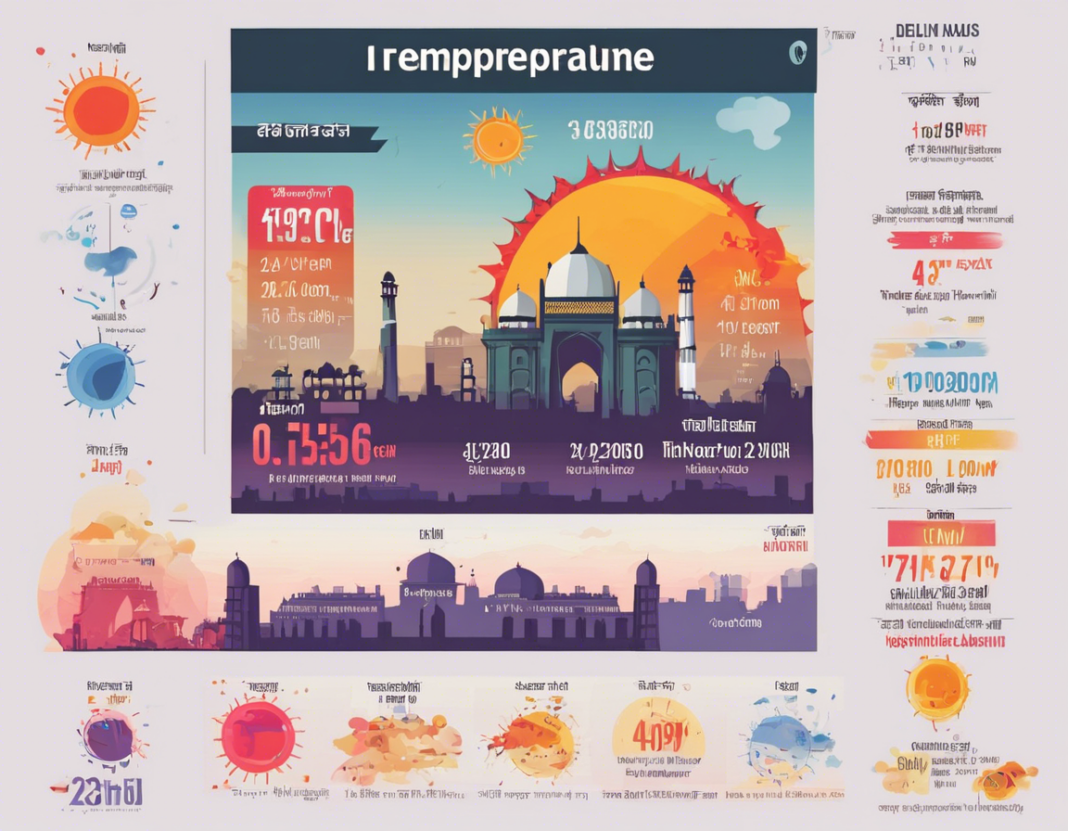Introduction
Delhi’s climate is renowned for its extreme temperatures, with scorching summers and chilly winters that can leave residents and visitors alike puzzled. The city experiences a continental climate characterized by hot summers, monsoon rains, and cold winters. However, over the years, the temperature in Delhi has been exhibiting fluctuations that have bewildered many.
Understanding Delhi’s Climatic Patterns
1. Summer
Delhi’s summer season typically begins in April and lasts until June, with temperatures soaring above 40 degrees Celsius. The dry heat during this period can be relentless, prompting residents to seek refuge indoors or rely on air conditioning to stay cool.
2. Monsoon
The onset of the monsoon season in Delhi brings much-needed relief from the scorching heat. Rainfall usually occurs between July and September, rejuvenating the city and bringing down the temperatures. However, erratic monsoon patterns in recent years have led to unpredictable weather conditions.
3. Winter
Delhi’s winter season, spanning from November to February, is characterized by cold temperatures that can drop below 5 degrees Celsius. The city experiences foggy mornings and cool breezes, making it necessary for residents to layer up to stay warm.
Factors Contributing to Temperature Fluctuations
1. Urbanization
The rapid urbanization of Delhi has significantly altered its microclimate, leading to heat island effects. Concrete structures, limited green spaces, and increased vehicular emissions have contributed to rising temperatures in the city.
2. Pollution
Delhi is infamous for its high levels of air pollution, especially during the winter months. Pollutants such as PM2.5 and PM10 particulate matter not only impact air quality but also trap heat, exacerbating the winter chill.
3. Global Climate Change
The effects of global climate change are being felt in Delhi, contributing to erratic weather patterns and temperature fluctuations. Rising global temperatures have a cascading effect on regional climates, leading to unpredictable weather events.
Mitigating Temperature Fluctuations
1. Green Spaces
Increasing the number of green spaces in Delhi can help mitigate temperature fluctuations by providing natural cooling and improving air quality. Planting trees and creating urban parks can counteract the heat island effect and create microclimates that are more conducive to comfortable temperatures.
2. Sustainable Practices
Adopting sustainable practices such as reducing carbon emissions, promoting public transportation, and implementing waste management strategies can help combat climate change and reduce the impact of temperature fluctuations in Delhi.
3. Public Awareness
Raising awareness about the importance of climate action and environmental conservation is crucial in addressing temperature fluctuations in Delhi. Educating the public about sustainable lifestyle choices and the impact of their actions on the environment can lead to positive changes.
Frequently Asked Questions (FAQs)
1. Why does Delhi experience such extreme temperature variations?
Delhi’s geographical location, urbanization, pollution levels, and global climate change are key factors contributing to the city’s extreme temperature variations.
2. How can individuals contribute to reducing temperature fluctuations in Delhi?
Individuals can contribute by adopting sustainable practices such as reducing energy consumption, using public transportation, planting trees, and promoting waste management.
3. Does climate change play a role in Delhi’s fluctuating temperatures?
Yes, climate change plays a significant role in Delhi’s fluctuating temperatures, leading to erratic weather patterns and extreme climatic events.
4. Are temperature fluctuations in Delhi a recent phenomenon?
While Delhi has always experienced temperature variations, the intensity and frequency of these fluctuations have increased in recent years due to various environmental factors.
5. How does air pollution impact temperature fluctuations in Delhi?
Air pollution traps heat in the atmosphere, exacerbating temperature fluctuations and contributing to extreme weather conditions in Delhi, especially during the winter months.
6. What measures is the government taking to address temperature fluctuations in Delhi?
The government has implemented initiatives such as vehicle emission controls, tree-planting drives, and pollution reduction measures to address temperature fluctuations and improve air quality in Delhi.
7. Can urban planning help reduce temperature fluctuations in Delhi?
Effective urban planning measures, such as increasing green spaces, regulating building construction, and promoting sustainable infrastructure, can help mitigate temperature fluctuations and create a more climate-resilient city.
8. How do temperature fluctuations impact human health in Delhi?
Temperature fluctuations in Delhi can have adverse effects on human health, causing heat-related illnesses in summer and respiratory problems due to air pollution in winter. It is essential to take precautions and prioritize health during extreme weather conditions.
9. What role do green initiatives play in combating temperature fluctuations in Delhi?
Green initiatives such as tree-planting projects, rooftop gardens, and sustainable urban development play a crucial role in combating temperature fluctuations by providing natural cooling, reducing pollution, and enhancing overall environmental quality.
10. How can climate resilience be improved in Delhi to address temperature fluctuations?
Enhancing climate resilience in Delhi requires a multi-faceted approach that includes sustainable urban planning, emission reduction strategies, public awareness campaigns, and conservation efforts to mitigate temperature fluctuations and build a more sustainable city.

